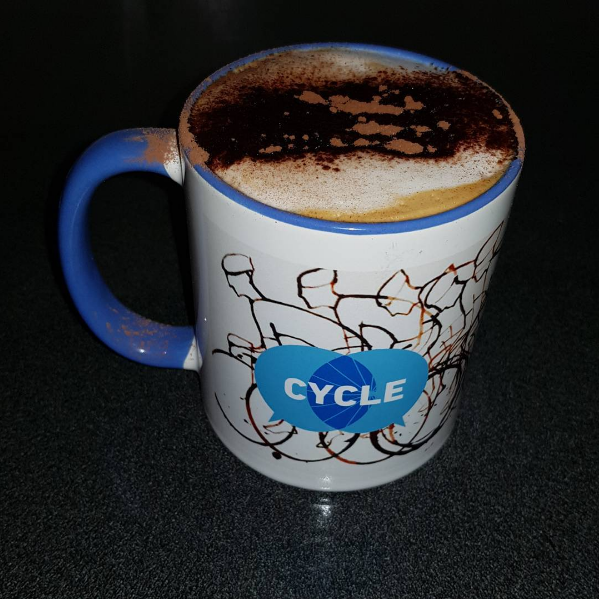Written by Rudy Botha
How often have you heard statements like, “Roads are for cars. Cars and bicycles don’t mix well, so get off the road and practice your hobby somewhere else.” There are probably a few profanities missing in that statement and it is usually followed up by emotionally charged, witty, but irrelevant metaphors that take the conversation around in circles. So, let’s settle this once and for all, and every time someone comes out with that line, remind them why cycling is important to everyone.
|
http://www.tmr.qld.gov.au/Safety/Queensland-road-rules/Bicycle-rules.aspx |
Firstly, motorised vehicles and bicycles have the same rights on the road in all states (although there are some specific rules applied to each). This fact takes some getting used to for some, but most people accept it and respect cyclists as legitimate road users. But a minority still think using this right is a selfish act: Footy players go to a stadium, tennis players to a tennis court, so why do cyclists insist on using public roads for their own enjoyment?
“If you want to stay healthy, that’s fine, but go to a park or the velodrome and stay of my road.”
An alternative transport option
The key thing to realise is that although cycling is generally seen as a sport, it is also a very effective form of transport and a lot of “weekend warriors” also use cycling as their preferred mode of transport. It has, roughly speaking, zero pollution and zero noise pollution. It requires considerably less infrastructure funding and leads to a healthier lifestyle, which means the health system is under less financial strain.
Undeniably we will always be dependant on cars and trucks and this is not an attack on the right to own and drive a car, or earning your living as a tradie. Instead it is an explanation on why we need to make cycling more attractive and a bigger part of our transport infrastructure so that the people that want to make use of it can make use of it.
Roads are also extremely expensive to build and the more you build, the more traffic is induced, so in most cases congestion doesn’t change by just adding more and more tarmac. Occasionally highly localised traffic problems can be addressed by improving flow at a specific bottleneck, but this doesn’t alleviate overall city-wide congestion. In the end it is not rocket science –less cars on the road mean less traffic.
Why not just use public transport then? Public transport is a very good option to move masses of people around, but also a very expensive one. Sydney’s new North West Rail link is budgeted at $8.3 billion and existing services are already overcrowded despite the fact that it is an expensive commuter option.
Choosing the preferred mode of transport
|
http://www.transport.nsw.gov.au/sites/default/files/b2b/publications/sydneys-cycling-future-web.pdf |
A world-class city needs to have an integrated transport system that combines all forms of transport: Walking, cycling, public transport and driving, in that order of preference. This doesn’t mean we all need to walk or cycle to work, but instead that each has its own place and we need to encourage the best option first and promote multimode transport (for example, using a train and walking from and to the train station).
Cycleways are more efficient in moving people around than roads and should be implemented as a key component of an integrated transport system. Because it makes cycling safer, it will encourage more people to cycle and will also ensure those “bloody Lycra boys” are out of the way. The result will be less congestion on the roads and will also allow people more freedom: Drive if you have to drive; cycle if it is a practical solution and your personal choice.
Get on board
Australia’s cycling infrastructure is lagging far behind other developed countries, maybe because governments and voters don’t realise the advantages it offers and the problems that it can solve. Governments will only get serious about it when it becomes a key voting topic so everyone needs to get on board.
We can argue endlessly about the fact that cyclists are also responsible for accidents with cars (but only at fault 13% of the time), run red lights, don’t use cycleways and don’t pay registration. Ironically when it comes to “paying for the road” some countries do the opposite by means of tax breaks to cyclists and the French is trailing a scheme to pay cyclists for commuting via bicycle. This is because cycling commuters actually saves governments’ and TAX payers money. All this perceived negativity, true or false, doesn’t take anything away from the massive advantages cycling commuting offers to all people – even the ones not making use of it.
Cycleways will never run to every home or every workplace so we will always need to share the roads, but no doubt that proper segregated cycleways (not just a few coats of green paint) will ease tension between motorists and cyclists, especially where cyclists can be taken off busy, dangerous roads and intersections.
So here is a message to motorists: Next time you are stuck in traffic and see a cyclist whooshing by, consider supporting their calls for better cycling infrastructure - for your own benefit. They might not be angels solving all the world’s problems, but what they do makes a small difference. Give them equal respect or if that’s too much, at least tolerance. You don’t have to get on a bike yourself, you don’t even have to like cyclists, but you can still help to transform our gridlocked, tar-covered cities into fantastic Liveable Cities.



